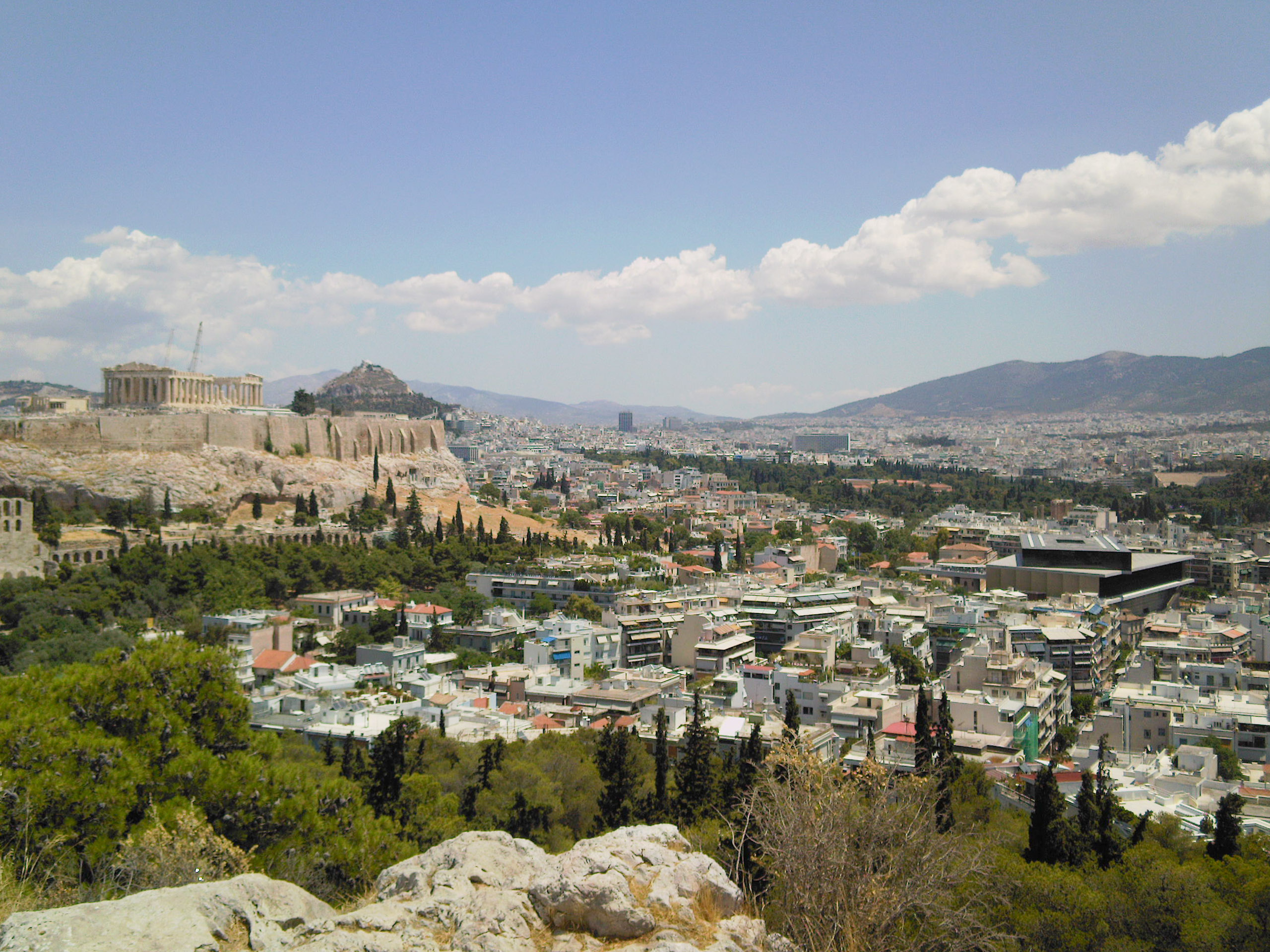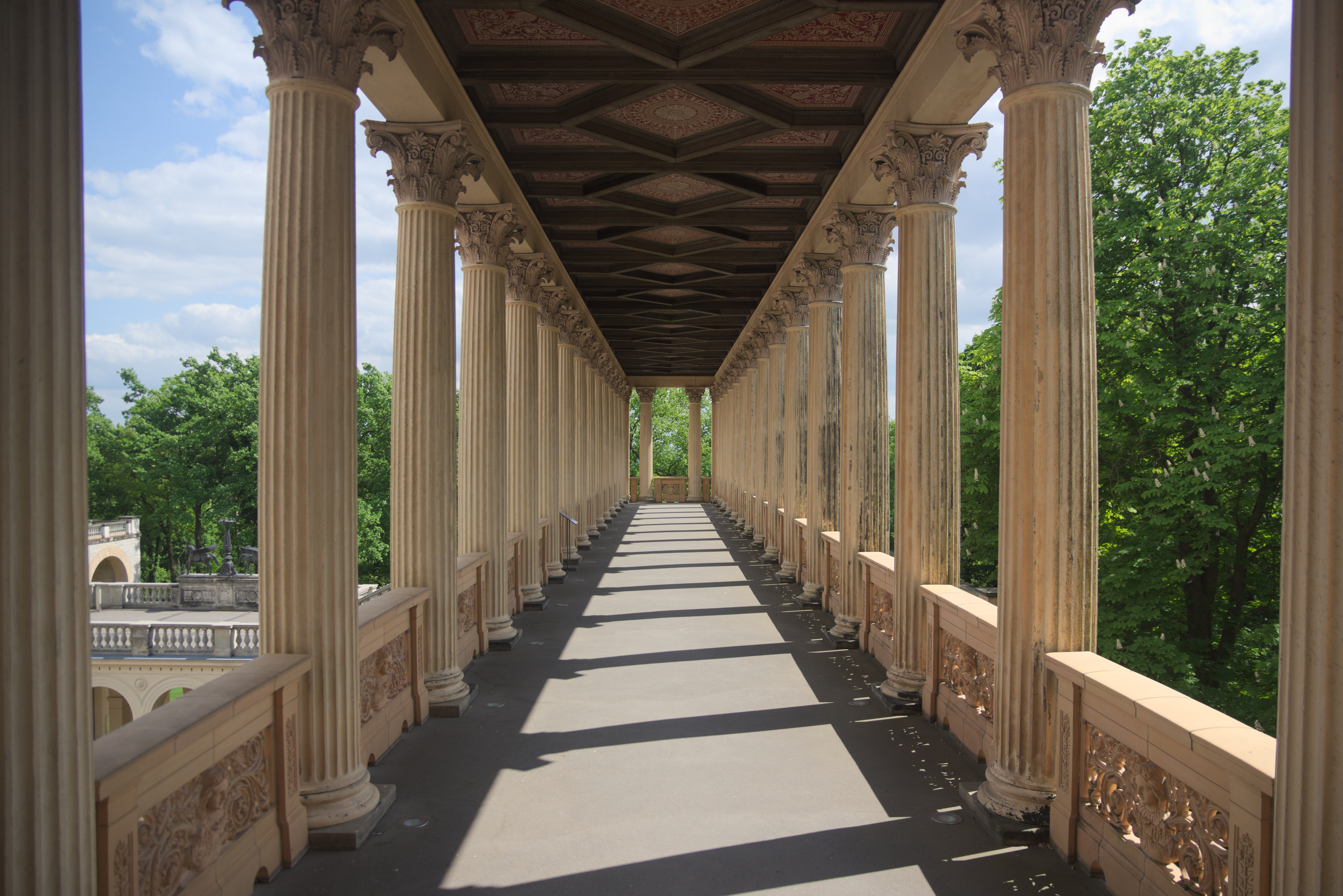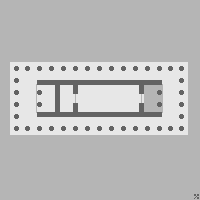|
Temple Of Athena Nike
The Temple of Athena Nike (Greek: Ναός Αθηνάς Νίκης, ''Naós Athinás Níkis'') is a temple on the Acropolis of Athens, dedicated to the goddesses Athena and Nike. Built around 420 BC, the temple is the earliest fully Ionic temple on the Acropolis. It has a prominent position on a steep bastion at the south west corner of the Acropolis to the right of the entrance, the Propylaea. In contrast to the Acropolis proper, a walled sanctuary entered through the Propylaea, the Victory Sanctuary was open, entered from the Propylaea's southwest wing and from a narrow stair on the north. The sheer walls of its bastion were protected on the north, west, and south by the ''Nike Parapet'', named for its frieze of Nikai celebrating victory and sacrificing to their patroness, Athena and Nike. Nike was the goddess of victory in Greek mythology, and Athena was worshipped in this form, representative of being victorious in war. The citizens worshipped the goddesses in hopes of a s ... [...More Info...] [...Related Items...] OR: [Wikipedia] [Google] [Baidu] |
Temple Of Athena Nikè From Propylaea, Acropolis, Athens, Greece
A temple (from the Latin ) is a place of worship, a building used for spiritual rituals and activities such as prayer and sacrifice. By convention, the specially built places of worship of some religions are commonly called "temples" in English, while those of other religions are not, even though they fulfill very similar functions. The religions for which the terms are used include the great majority of ancient religions that are now extinct, such as the Ancient Egyptian religion and the Ancient Greek religion. Among religions still active: Hinduism (whose temples are called Mandir or Kovil), Buddhism (whose temples are called Vihāra, Vihar), Sikhism (whose temples are called Gurdwara, gurudwara), Jainism (whose temples are sometimes called derasar), Zoroastrianism (whose temples are sometimes called Agiary), the Baháʼí Faith (which are often simply referred to as Baháʼí House of Worship), Taoism (which are sometimes called Daoguan), Shinto (which are often called ... [...More Info...] [...Related Items...] OR: [Wikipedia] [Google] [Baidu] |
Acropolis Museum
The Acropolis Museum (, ''Mouseio Akropolis'') is an archaeological museum focused on the findings of the archaeological site of the Acropolis of Athens. The museum was built to house every artifact found on the rock and on the surrounding slopes, from the Greek Bronze Age to Roman and Byzantine Greece. The Acropolis Museum also lies over the ruins of part of Roman and early Byzantine Athens. The museum was founded in 2003 while the Organization of the Museum was established in 2008. It opened to the public on 20 June 2009. More than 4,250 objects are exhibited over an area of 14,000 square metres. History The first museum was on the Acropolis; it was completed in 1874 and underwent a moderate expansion in the 1950s. However, successive excavations on the Acropolis uncovered many new artifacts which significantly exceeded its original capacity. An additional motivation for the construction of a new museum was when the Greeks made requests for the repatriation of the Elgin Ma ... [...More Info...] [...Related Items...] OR: [Wikipedia] [Google] [Baidu] |
Pediment
Pediments are a form of gable in classical architecture, usually of a triangular shape. Pediments are placed above the horizontal structure of the cornice (an elaborated lintel), or entablature if supported by columns.Summerson, 130 In ancient architecture, a wide and low triangular pediment (the side angles 12.5° to 16°) typically formed the top element of the portico of a Greek temple, a style continued in Roman temples. But large pediments were rare on other types of building before Renaissance architecture. For symmetric designs, it provides a center point and is often used to add grandness to entrances. The cornice continues round the top of the pediment, as well as below it; the rising sides are often called the "raking cornice". The tympanum is the triangular area within the pediment, which is often decorated with a pedimental sculpture which may be freestanding or a relief sculpture. The tympanum may hold an inscription, or in modern times, a clock face. ... [...More Info...] [...Related Items...] OR: [Wikipedia] [Google] [Baidu] |
Stylobate
In classical Greek architecture, a stylobate () is the top step of the crepidoma, the stepped platform upon which colonnades of temple columns are placed (it is the floor of the temple). The platform was built on a leveling course that flattened out the ground immediately beneath the temple. Etymology The term ''stylobate'' comes from the Ancient Greek , consisting of (stylos), "column", and (bainein), "to stride, walk". Terminology Some methodologies use the word ''stylobate'' to describe only the topmost step of the temple's base, while stereobate is used to describe the remaining steps of the platform beneath the stylobate and just above the leveling course. Others, like John Lord, use the term to refer to the entire platform. Architectural use The stylobate was often designed to relate closely to the dimensions of other elements of the temple. In Greek Doric temples, the length and width of the stylobate were related, and in some early Doric temples the column h ... [...More Info...] [...Related Items...] OR: [Wikipedia] [Google] [Baidu] |
Architect
An architect is a person who plans, designs, and oversees the construction of buildings. To practice architecture means to provide services in connection with the design of buildings and the space within the site surrounding the buildings that have human occupancy or use as their principal purpose. Etymologically, the term architect derives from the Latin , which derives from the Greek (''-'', chief + , builder), i.e., chief builder. The professional requirements for architects vary from location to location. An architect's decisions affect public safety, and thus the architect must undergo specialised training consisting of advanced education and a ''practicum'' (or internship) for practical experience to earn a Occupational licensing, license to practice architecture. Practical, technical, and academic requirements for becoming an architect vary by jurisdiction though the formal study of architecture in academic institutions has played a pivotal role in the development of the p ... [...More Info...] [...Related Items...] OR: [Wikipedia] [Google] [Baidu] |
Amphiprostyle
In classical architecture, amphiprostyle (from the Greek (''amphi''), on both sides, and (''prostylos''), a portico) denotes an ancient temple with a portico both at the front and the rear, where the columns on the narrow sides are not between antae. The number of columns rarely exceeded four in the front and four in the rear. The best-known example is the tetrastyle small Temple of Athena Nike at Athens. Other known examples are the Temple of Artemis Agrotera outside Athens, and the hexastyle Temple of the Athenians at Delos. Amphiprostyle temples without columns on the sides may be termed "apteral" (from the Greek απτερος, "wingless": α-, "without" + πτερον, "wing"). The Athena Nike temple, c. 420 BC, is one such example. See also *Prostyle *Distyle in antis *Temple of Venus and Roma The Temple of Venus and Roma (Latin: ''Aedes Veneris et Romae'') is thought to have been the largest Roman temple, temple in Ancient Rome. Located on the Velian Hill, between t ... [...More Info...] [...Related Items...] OR: [Wikipedia] [Google] [Baidu] |
Portico
A portico is a porch leading to the entrance of a building, or extended as a colonnade, with a roof structure over a walkway, supported by columns or enclosed by walls. This idea was widely used in ancient Greece and has influenced many cultures, including most Western cultures. Porticos are sometimes topped with pediments. Palladio was a pioneer of using temple-fronts for secular buildings. In the UK, the temple-front applied to The Vyne, Hampshire, was the first portico applied to an English country house. A pronaos ( or ) is the inner area of the portico of a Greek or Roman temple, situated between the portico's colonnade or walls and the entrance to the '' cella'', or shrine. Roman temples commonly had an open pronaos, usually with only columns and no walls, and the pronaos could be as long as the ''cella''. The word ''pronaos'' () is Greek for "before a temple". In Latin, a pronaos is also referred to as an ''anticum'' or ''prodomus''. The pronaos of a Greek a ... [...More Info...] [...Related Items...] OR: [Wikipedia] [Google] [Baidu] |
Colonnade
In classical architecture, a colonnade is a long sequence of columns joined by their entablature, often free-standing, or part of a building. Paired or multiple pairs of columns are normally employed in a colonnade which can be straight or curved. The space enclosed may be covered or open. In St. Peter's Square in Rome, Bernini's great colonnade encloses a vast open elliptical space. When in front of a building, screening the door (Latin ''porta''), it is called a portico. When enclosing an open court, a peristyle. A portico may be more than one rank of columns deep, as at the Pantheon in Rome or the stoae of Ancient Greece. When the intercolumniation is alternately wide and narrow, a colonnade may be termed "araeosystyle" (Gr. αραιος, "widely spaced", and συστυλος, "with columns set close together"), as in the case of the western porch of St Paul's Cathedral St Paul's Cathedral, formally the Cathedral Church of St Paul the Apostle, is an Anglican c ... [...More Info...] [...Related Items...] OR: [Wikipedia] [Google] [Baidu] |
Column
A column or pillar in architecture and structural engineering is a structural element that transmits, through compression, the weight of the structure above to other structural elements below. In other words, a column is a compression member. The term ''column'' applies especially to a large round support (the shaft of the column) with a capital and a base or pedestal, which is made of stone, or appearing to be so. A small wooden or metal support is typically called a '' post''. Supports with a rectangular or other non-round section are usually called '' piers''. For the purpose of wind or earthquake engineering, columns may be designed to resist lateral forces. Other compression members are often termed "columns" because of the similar stress conditions. Columns are frequently used to support beams or arches on which the upper parts of walls or ceilings rest. In architecture, "column" refers to such a structural element that also has certain proportional and decorative f ... [...More Info...] [...Related Items...] OR: [Wikipedia] [Google] [Baidu] |
Tetrastyle
A portico is a porch leading to the entrance of a building, or extended as a colonnade, with a roof structure over a walkway, supported by columns or enclosed by walls. This idea was widely used in ancient Greece and has influenced many cultures, including most Western cultures. Porticos are sometimes topped with pediments. Palladio was a pioneer of using temple-fronts for secular buildings. In the UK, the temple-front applied to The Vyne, Hampshire, was the first portico applied to an English country house. A pronaos ( or ) is the inner area of the portico of a Greek or Roman temple, situated between the portico's colonnade or walls and the entrance to the ''cella'', or shrine. Roman temples commonly had an open pronaos, usually with only columns and no walls, and the pronaos could be as long as the ''cella''. The word ''pronaos'' () is Greek for "before a temple". In Latin, a pronaos is also referred to as an ''anticum'' or ''prodomus''. The pronaos of a Greek and Roma ... [...More Info...] [...Related Items...] OR: [Wikipedia] [Google] [Baidu] |
Peace Of Nicias
The Peace of Nicias was a peace treaty signed between the Greek city-states of Athens and Sparta in March 421 BC that ended the first half of the Peloponnesian War. Background In 425 BC, the Spartans had lost the battles of Pylos and Sphacteria, a severe defeat resulting in the Athenians holding 292 prisoners. At least 120 were Spartiates, who had recovered by 424 BC, when the Spartan general Brasidas captured Amphipolis. In the same year, the Athenians suffered a major defeat in Boeotia at the Battle of Delium, and in 422 BC, they were defeated again at the Battle of Amphipolis in their attempt to take back that city. Both Brasidas, the leading Spartan general, and Cleon, the leading politician in Athens, were killed at Amphipolis. By then, both sides were exhausted and ready for peace. The treaty was signed with the agreement of both Sparta and Athens, considering the disadvantages faced by both polis during the first Peloponnesian War. The Athenians were motivated afte ... [...More Info...] [...Related Items...] OR: [Wikipedia] [Google] [Baidu] |








